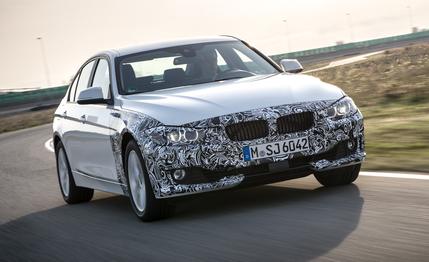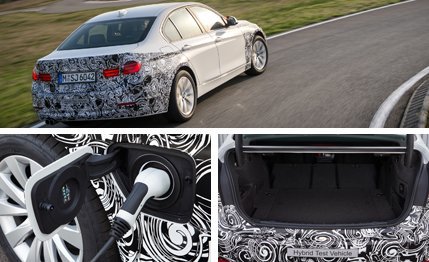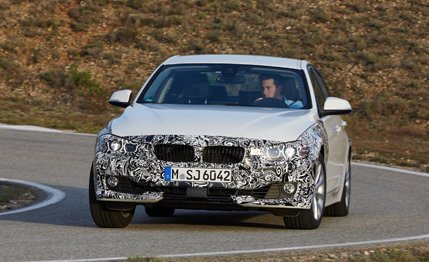 Prototype Drive
Prototype Drive
The entry-luxury sedan segment’s dominant Germans are about to extend their merciless battle to plug-in hybrids. Audi is prepping such a version of the A4 and Mercedes-Benz has a corded C-class in the works. Naturally, BMW’s pluggable 3-series is also imminent.
The big unanswered question in this emerging sub-segment, however, is exactly how much EV range people expect from their plug-in hybrid. For its part, BMW is about to take a very big bet that less plug-in hybrid might just be more. Audi has staked out 30 miles of pure-electric running as its baseline. BMW, though, thinks 22 miles is plenty for the 3-series eDrive. (Mercedes agrees, citing 20 miles for its C350 PHEV.) If you need any more than that, BMW will gladly steer you over to the i3 or the more practical but still-unconfirmed i5.

If it all goes to plan, the shorter range will give the BMW—which, since no one remembers the “eta”-engined E30, is very likely to be badged 328e—some advantages. To cite just three: It has fewer lithium-ion cells than the Audi and is therefore cheaper, a smaller battery is a lot easier to package amongst its rear-drive hardware, and the entire hybrid component set weighs less. If it doesn’t all go to plan, it will mean too many people will find the Audi’s extra range is the difference between charging the car once a day or twice.
Still, this is the car BMW development engineer Helmuth Wiesler is counting on to future-proof the brand’s most important model line against emissions laws and taxes, so he’s taking it all very seriously. There’s also the fact that BMW plans to make a plug-in version of every major model it sells.
His development team gave the 3-series eDrive BMW’s new 2.0-liter turbocharged and direct-injected B48 four-cylinder gasoline engine. It has 180 horsepower and 236 lb-ft of torque and works through an eight-speed automatic transmission that sends output to the rear axle. But within this transmission lies the eDrive’s trick: BMW has effectively swapped out the traditional torque converter for a “torque transformer,” which is, to the rest of us, an electric motor.

This 95-hp electric motor (sorry, “torque transformer”) acts directly on the input shaft, so little energy is wasted. And not only does it push more power and torque under acceleration, it also acts as a generator whenever the car decelerates and takes over starter-motor duties.
It gets the juice to do its work from a refrigerant—not water—cooled 7.6-kWh lithium-ion battery pack mounted at the back of the car. (The battery pack’s operating range is the middle 5.5 kWh.) It’s not all great news, though, because the housing for the pack pushes the trunk floor up by more than an inch.
Combining the two powerplants for maximum urge, as the 3-series eDrive does in its Sport mode, results in 245 horsepower, which is about on the money for the conventional 328i, as well as 295 lb-ft of torque. Yet the car scores a European combined consumption figure of 118 mpg, albeit on a test cycle optimized for plug-ins.